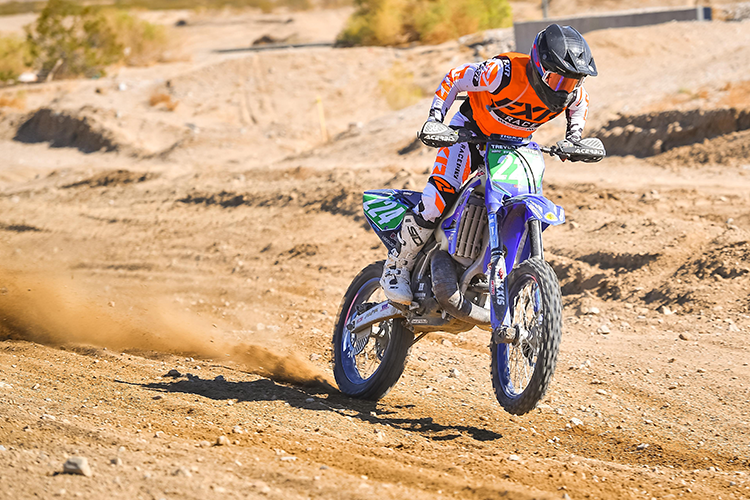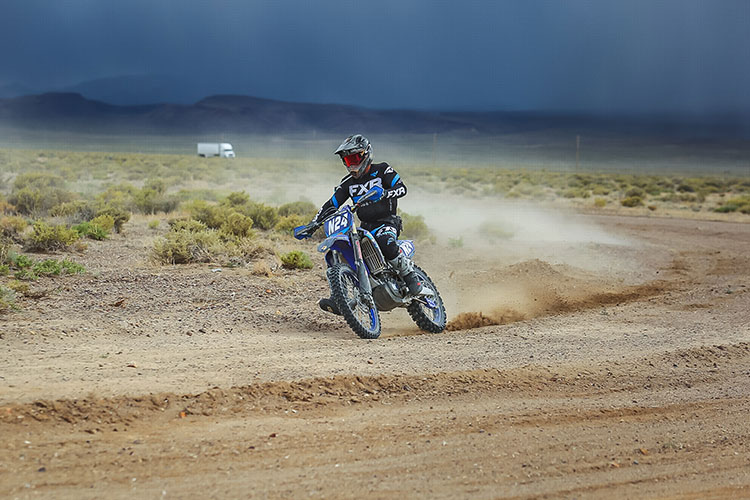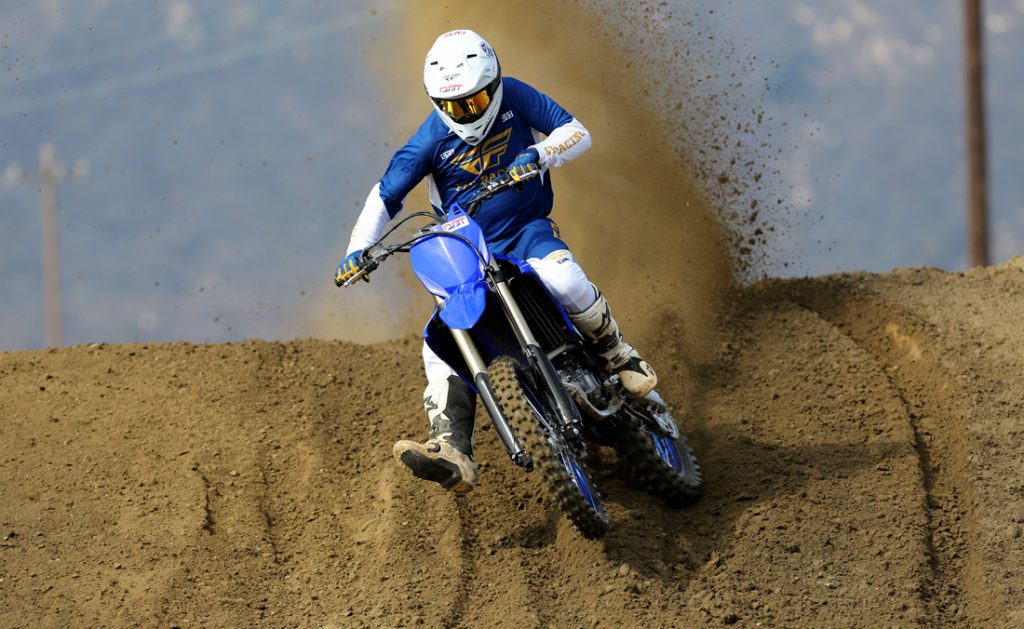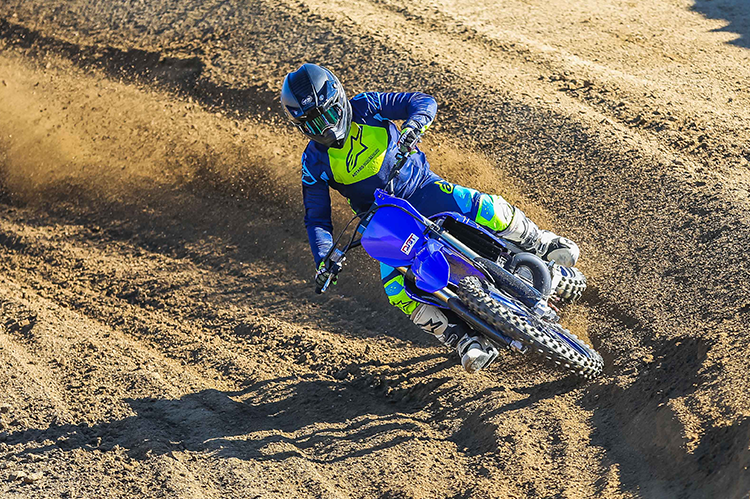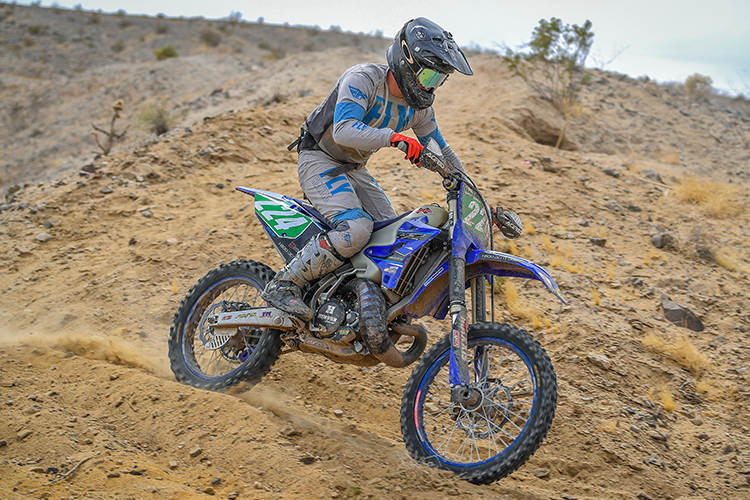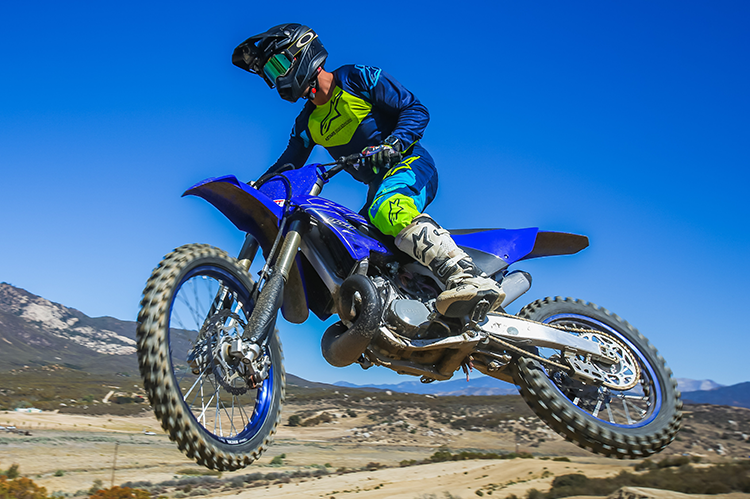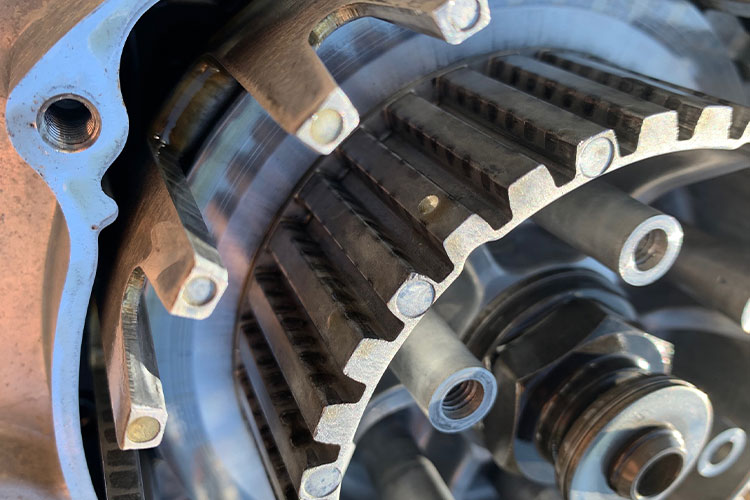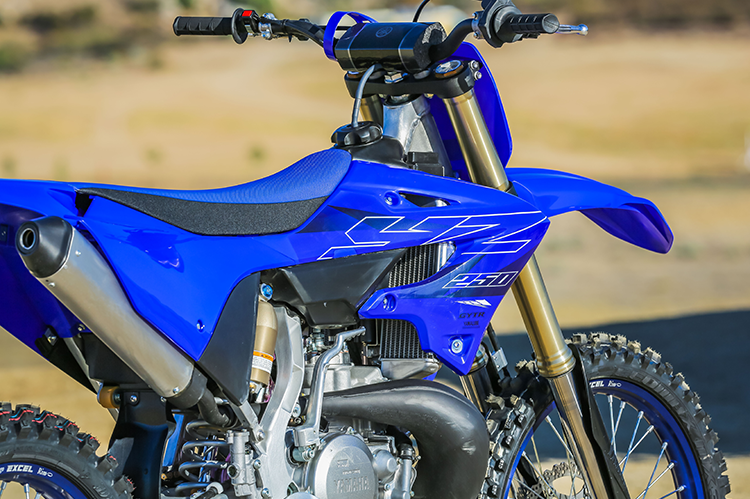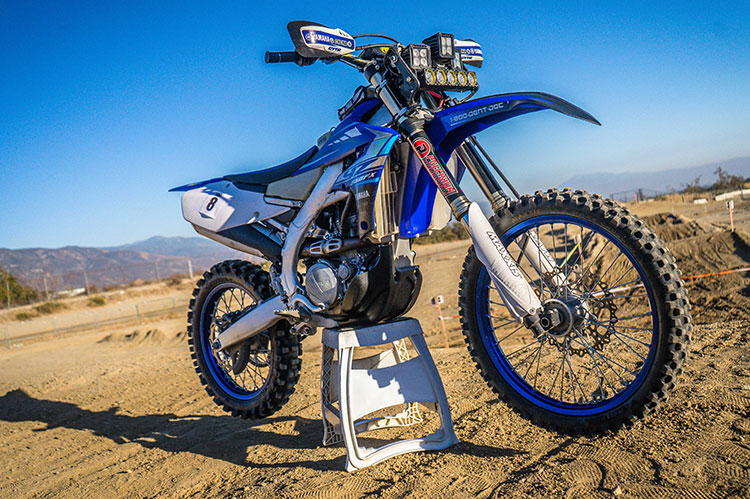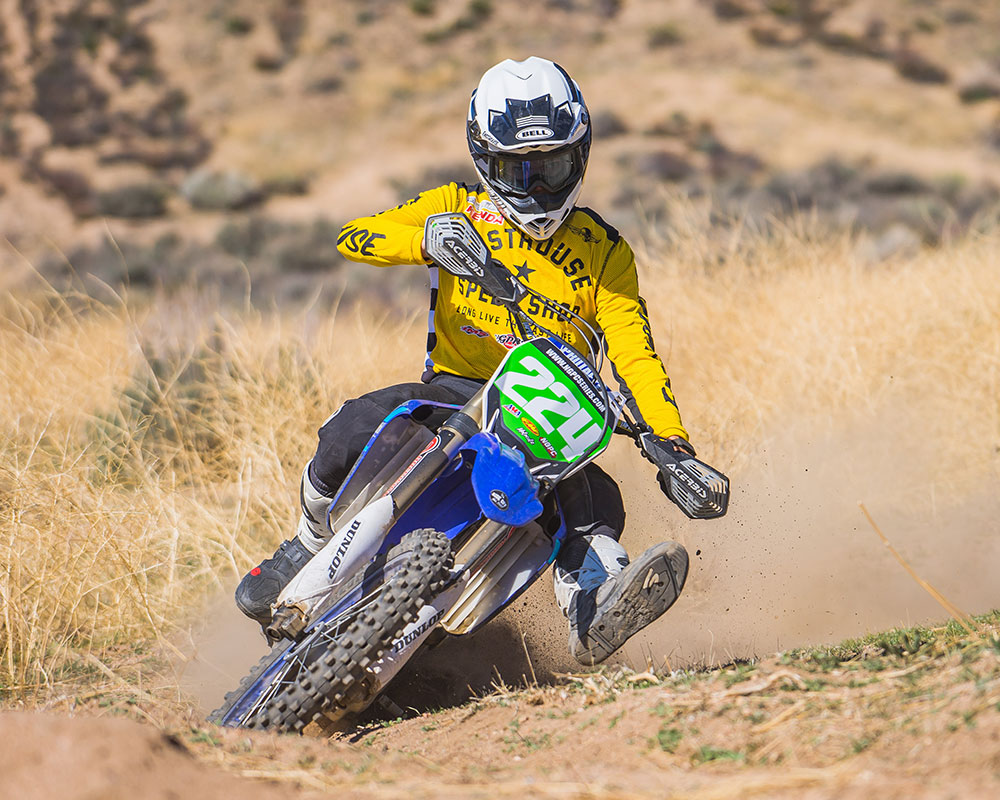Tried-And-True vs New School
Story by Trevor Hunter
Two-stroke or four-stroke? It’s an age-old debate that may never be settled. Die hard fans on either side will argue to the death that their side is right and the other is wrong. Occasionally you’ll find someone neutral and with enough sense to recognize each side’s strengths and weaknesses… But let’s not kid ourselves, arguing is more fun and thus what mankind and motorcycle racers in specific are here to do. Well, we’re here to represent the reasonable, sensible riders and break down what each bike does well and where it may lack, specifically with Yamaha’s YZ250 two-stroke and YZ250FX four-stroke. We’ve spent the last 18 months racing and riding both bikes in several disciplines and across a wide range of terrain to have enough notes and feedback to possibly settle the debate. Or just fuel the fire to keep it going.
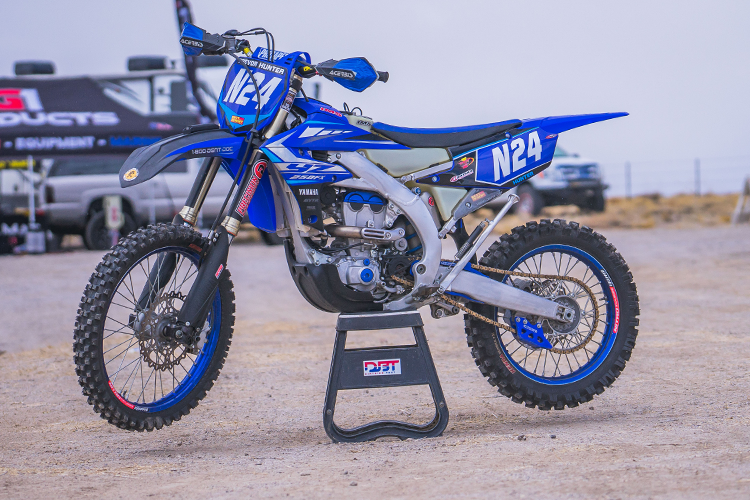
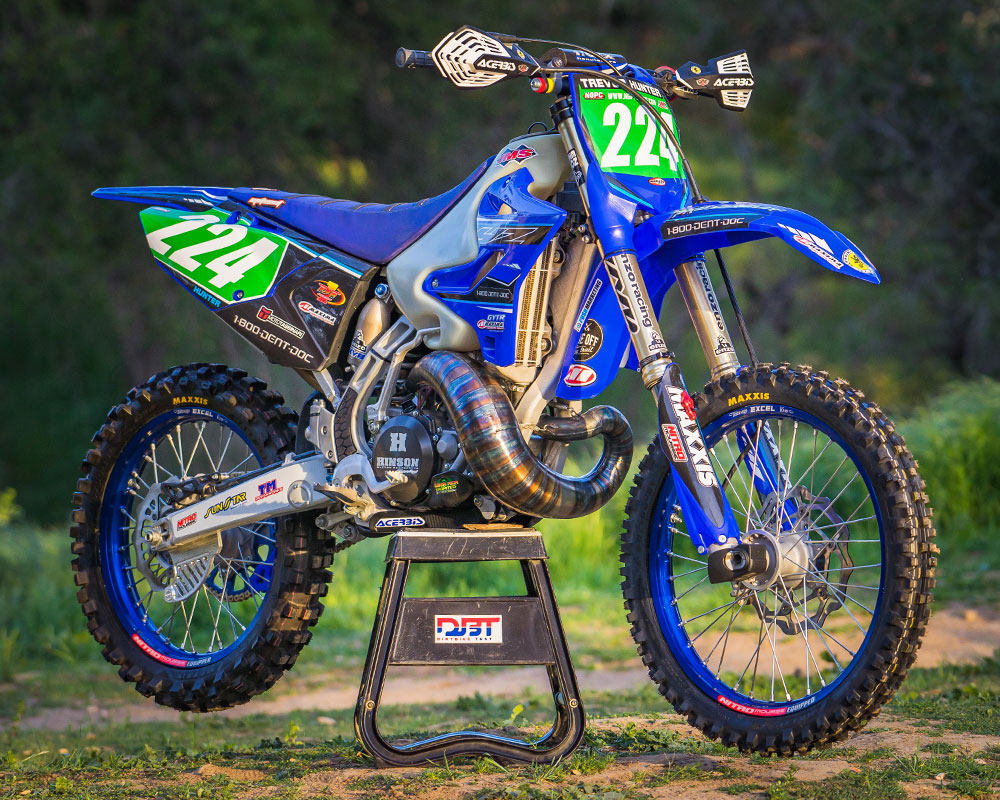
Power:
Two-stroke power is harder to ride, yet easier at the same time. We like to say it is tougher mentally to keep a two-stroke in the meat of the power. You have to cover the shifter and clutch like a hawk eyeing its prey or you’ll bog down and watch the competition leave you in the dust. You really can’t be lazy on a two-stroke and the YZ250 is no different. Downshifting into every corner, often multiple times at that, is necessary and quite often, you’ll have to take a quick stab at the clutch to keep you in the power. Here, the YZ is known for having a robust bottom end and can be ridden in taller gears than some other two-stroke engines, but it’s still a two-stroke at heart. Mentally, you have to be on it to shift as much as you need to on a two-stroke to be competitive. However, unless traction is abundant, you really have to be gentle with the throttle and manage it based on how the bike is reacting in the moment. Once you get out of the corner, shifting at appropriate times is critical as there isn’t much room for error here. In short, you have to be reactive and precise, smooth and gentle, or aggressive mentally to ride a YZ250 two-stroke appropriately with such a short powerband at hand.
On the FX, you can get pretty lazy and still ride fairly fast. The torque and bottom end a YZ250FX presents is far different than that of a YZ two-smoker. It is 450 esque in a world where high revs rule the roost and Yamaha’s four-stroke motor is the “easiest” 250F to ride in our books. With that being said, to get the most out of the motor, you really have to hammer the throttle and often go from zero to hero with it. Even when traction is at a premium, four-strokes are very good about finding traction and hooking up all the time. The four-stroke is tougher physically to keep in the meat of the power as you wack the throttle wide open and maneuver the bike accordingly to get the most out of it. Shifting happens far less as you let the bike rev out a lot more than on a two-stroke. Four-stroke power is much broader and strung out over the rev range in comparison to a two-stroke. Likewise, on a 250F, revving is generally the happy place when trying to get the most out of the motor. But, when you’re trail riding or you get tired, short shifting and riding at lower RPM’s are generally more favorable.
Four-strokes are also more broad – no matter the conditions or terrain, they will work very good – say at 95% of peak performance. A two-stroke is much more defined and at peak can be better than a YZF (100% peak performance), but in the wrong conditions, it is much less favorable and harder to ride (~80% peak performance).
In short, riding a two-stroke requires you to be smarter and smoother with the throttle and more precise with shifting. On a four-stroke, you have to be aggressive with the throttle to be ridden fast, but can be ridden lazily more effectively. To me, riding a two-stroke fast is less tiring than riding a 250F fast, but once tired, riding a four-stroke fast is much easier.
One thing that really stands out, and this is more apparent with Yamaha’s than other brands who have counter-balanced two-strokes, is the vibration of a YZ. While it’s not a 500cc two-stroke, the YZ still vibrates quite a bit through the bars and pegs and is something everyone feels when jumping back and forth. Though, if you are accustomed to this vibration, it’s not that big of a deal. The four-stroke has all but no vibration with a more modern design including a counter balancer inside the engine.
Additionally, engine braking is a big deal between the two bikes. On a four-stroke, you rely on engine braking so much more than you think and it becomes ingrained in how you ride. For those jumping onto the two stroke, blowing a few turns early on is pretty standard. Engine braking is welcomed by some and disliked by others. We’ve ridden newer four-strokes with little to no engine braking and two-stroke riders rejoiced in the free feeling chassis handling and speed upon corner entry. However, some rely on that engine braking and prefer to have it. Another big one is starting the bike. The YZ250 is one of the only new big bikes that doesn’t have an electric start. This keeps the bike simpler and lighter, but it sure is nice to have a button – even on a two-stroke.
Handling:
Like the power, both bikes handle very differently from one another. The two-stroke is light and agile, some may say “dancy”, while the four-stroke is planted and stable. In today’s day and age, the four-stroke handling can be preferred, especially as the terrain gets choppier. The added weight and crank inertia of the four-stroke keeps the bike planted to the ground and drives through small chop, square edges, rocks, etc.
Additionally, they make traction time and time again, we see a lot of people look at the scale weight of a motorcycle and judge a bike purely on that. While a lighter bike does have its advantages, heavier bikes also have advantages that many fail to recognize and comparing two-strokes and four-strokes exemplifies that. A YZ250FX is a great example of this as it is one of the heaviest bikes on paper but the difference on the trail is far less drastic than what the scale shows. When you get into bigger whoops or sand, the lightweight two-stroke shines as it stays on top of it a little better and is more agile.

While the YZ250FX isn’t the best example of this, most other 250F’s require more revving and higher RPMs to go anywhere in a hurry. As a result, four-strokes feel heavier and handling is affected as the RPMs rise. The added weight helps keep them planted, but the four-strokes can get jumbled up in rough terrain on the rev limiter. However, they feel incredibly light when ridden at lower RPM’s. Two-strokes are less affected by this and feel relatively similar throughout the RPM range.
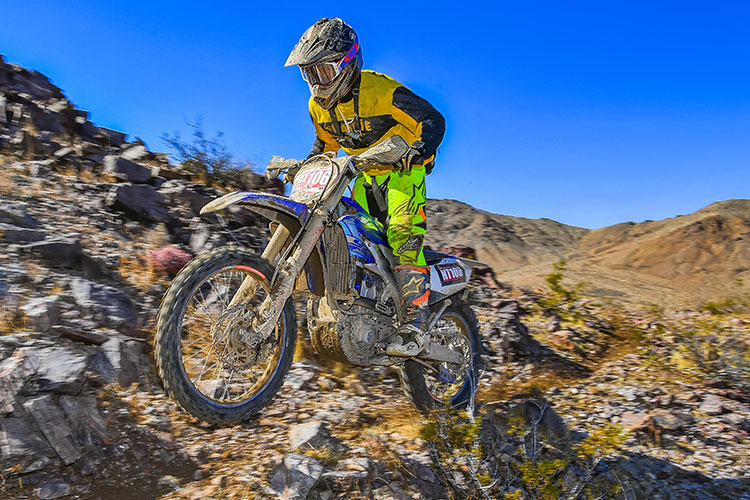
On the moto tracks, jumping on a two stroke typically sees a rider front end high at first. The light weight bike and free revving motor keep the front end light and high on jump faces. Two-strokes in nature are more difficult to jump and take time to learn the process whereas it comes naturally on a four-stroke.
Durability:
Yes, four-strokes are costly to rebuild when something goes wrong. And yes, there is more to go wrong with a four-stroke. BUT, the days of four-strokes being ticking time bombs is long gone. The durability of a stock four-stroke motor these days is very good and maintaining them shows. On KTM and Yamaha 250F’s we’ve seen 80+ hard racing and riding hours on original motors with zero maintenance other than regular oil changes and clean air filters. Valves in spec, compression in range, and no reliability issues to speak of. Until they go wrong, they are actually very cheap and easy to maintain. Of course, staying ahead of the curve and performing preventative maintenance is key to a long lasting and “cheap” four-stroke.
On two-strokes, maintenance and tinkering is more common. On our YZ250, we typically don’t go more than 30 hard hours on a top-end – but this is done as a preventative measure. We know they can and will go longer, but racing all the time leaves little room for error and a top-end change is so quick and easy on a two-stroke, it’s not much of a job. The lack of fuel injection can lead to tinkering with jetting depending on when/where you’re riding, but Yamaha’s Keihin setup is less finicky and doesn’t have to be messed with much. Still, it’s no fuel injection which is perfect every time you ride. Also, there’s little things like fuel economy or not having to carry premix with you on longer rides with four-strokes. This is very appealing for four-strokes when trail riding as you can ride further without having to worry about fueling siutations.
So what have we done to our Yamaha’s in terms of maintenance in the past year? Below is a detailed breakdown.
YZ250FX: 85 Hours
- Oil change every 5-6 hours w/ filter every other change
- Regular air filter maintenance
- Top end at 75 hours
- Connecting rod at 80 hours (traced back to being overridden at a desert race)
- Throttle cables at 60 hours
- Clutch plates at 70 hours
- Battery replacement at 50 hours
- Front wheel bearings at 60 hours
- Suspension service every 30-40 hours
YZ250: 50 Hours
- Transmission oil change every 3-5 hours
- Regular air filter maintenance
- Top end every 25 hours (on the safe side)
- Third/fourth gear seized on shaft at 22 hours (Yamaha’s two-stroke transmissions can be problematic under hard use)
- Throttle/clutch cables at 50 hours
- Clutch plates at 30 hours
- Clutch basket at 45 hours
- Suspension service every 30-40 hours
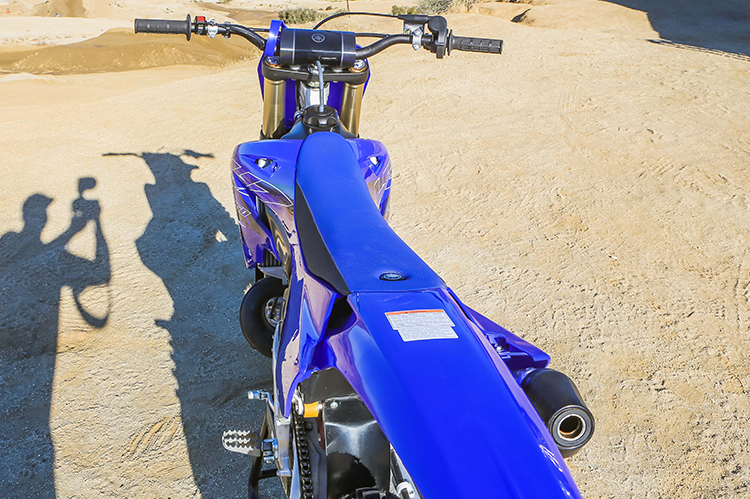
Overall, both bikes are very good and very capable in the right hands and right conditions. The four-stoke is easy, versatile, and appealing to a wide range of riders. The two-stroke often peaks the fun factor, can perform as good if not better than the four-strokes in the right conditions, and are simple. Durability wise, the four-stroke is just as durable if not more than a two-stroke. They are more complex to work on and troubleshoot, but they are also pretty straightforward in that there really isn’t much to do to them.
A four-stroke is much easier to transition to and jump on one right away, whereas the two-stroke does take some time and doesn’t always feel the best if the conditions aren’t right. Two-strokes will make you a better, more aggressive rider and keep you sharp, unlike a four-stroke which doesn’t hinder laziness nearly as much. Both bikes have their pros and cons, now it’s up to you to decide which fits you.
